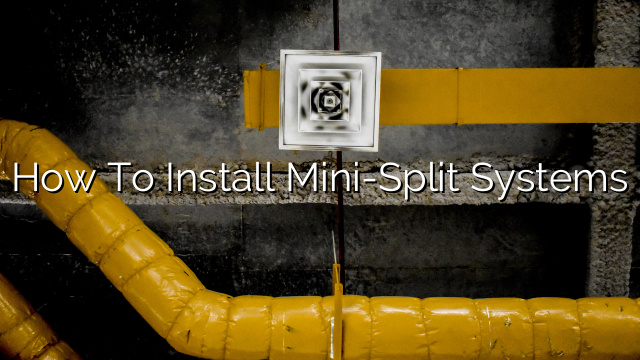Introduction
Mini-split systems, also known as ductless systems, are a popular choice for many homeowners due to their energy efficiency, flexibility, and ease of installation. Whether you’re looking to cool a single room or an entire home, mini-split systems offer a cost-effective and convenient solution.
Step 1: Determine the Location of the Indoor Unit
The first step in installing a mini-split system is to determine the location of the indoor unit. This should be a central location within the room where you want to cool or heat. It’s important to choose a location that has good air circulation and is away from any obstructions such as curtains or furniture.
Step 2: Mount the Indoor Unit
Once you’ve determined the location for the indoor unit, you’ll need to mount it on the wall. Start by drilling holes for the mounting brackets and secure them in place. Then, attach the indoor unit to the brackets and make sure it’s level.
Step 3: Connect the Refrigerant Lines
The next step is to connect the refrigerant lines between the indoor and outdoor units. These lines are responsible for transferring the refrigerant necessary for cooling or heating. Start by drilling a hole in the wall behind the indoor unit, and then feed the lines through the hole. Connect the lines to the corresponding ports on both units and ensure they are tightly sealed.
Step 4: Install the Condenser Unit
The condenser unit, also known as the outdoor unit, should be installed in a location that provides proper ventilation and is away from any potential obstructions. Use mounting brackets to secure the unit in place and make sure it’s level. It’s also important to place the unit on a sturdy surface to minimize vibrations and noise.
Step 5: Connect the Power Supply
Once the indoor and outdoor units are installed, you’ll need to connect the power supply. This will involve running electrical wiring from the circuit breaker to the outdoor unit and then to the indoor unit. It’s important to follow local electrical codes and regulations to ensure a safe installation.
Step 6: Test the System
After completing the installation, it’s important to test the system to ensure everything is working properly. Turn on the power and check for any error codes or warning lights on both the indoor and outdoor units. Check the airflow from the indoor unit to make sure it’s coming out as expected. You can also test the heating and cooling functions to ensure they’re working efficiently.
Step 7: Perform Regular Maintenance
Once the mini-split system is installed, it’s important to perform regular maintenance to keep it running smoothly. This includes cleaning or replacing the air filters, checking and cleaning the condenser coils, and ensuring all the components are free from dirt and debris. Regular maintenance will not only prolong the lifespan of the system but also improve its performance and energy efficiency.
In Conclusion
Installing a mini-split system is a relatively simple and straightforward process that can be completed by homeowners with basic DIY skills. By following the steps outlined above and ensuring proper maintenance, you can enjoy the benefits of a cost-effective and efficient cooling and heating system in your home.














